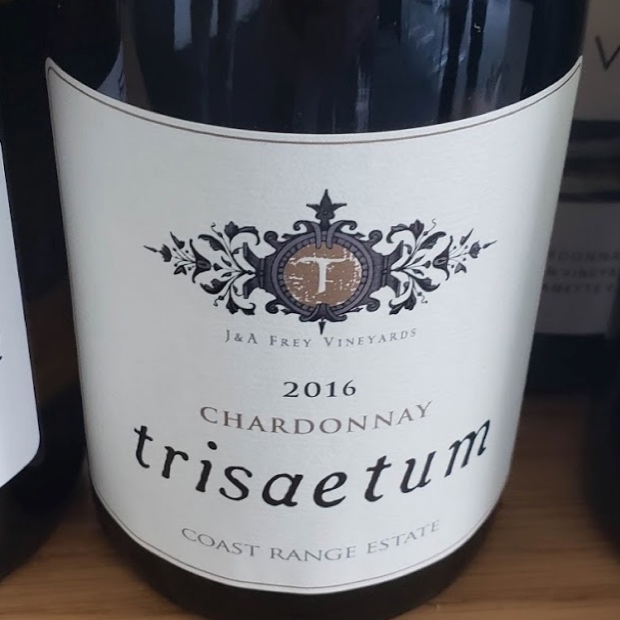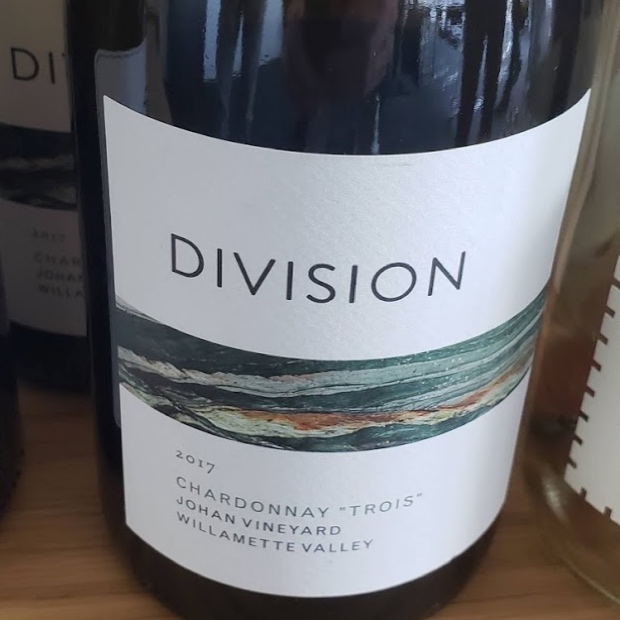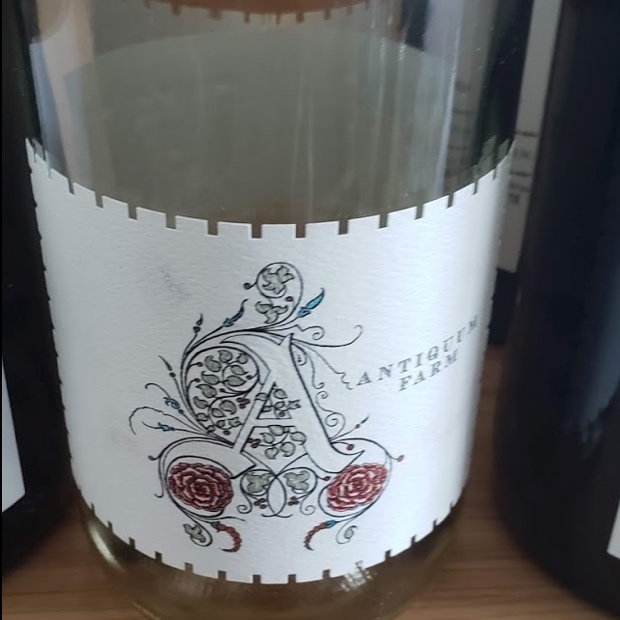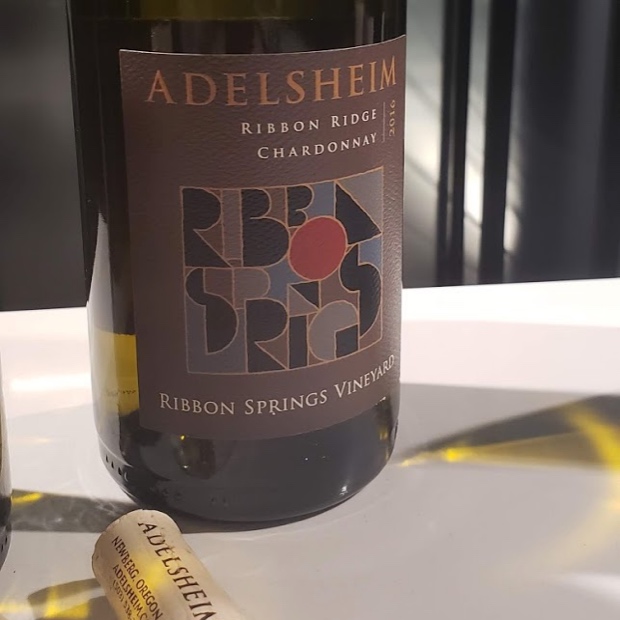Getting deeper into Oregon, thanks to a recent masterclass and trade tasting, as well as a private sit-down interview with the thoughtful David Adelsheim of Adelsheim Vineyard
as seen on WineAlign
When I think of Oregon deliver me in a place where you saddle up to a pioneer town bar and lie beneath a blanket of stars. When I consider Oregon as a grape growing state I think of chardonnay and pinot noir vines cutting natural swaths through territory girded by mountains, an ocean and wide open skies. This latter notion does not stray far from the truth. The modern-day viticultural vernacular may only do its talking out of roots laid down for a mere 60 years but it is spoken with an unmatched sustainable clarity. Today Oregon’s wine presence is trenchant and persistent. If this is the golden era for Oregon wine, you’d better run to get your piece.
While the growing, fermenting and bottling of chardonnay has seen a recent transformation out of an emulation of a “style” to a new emergence that celebrates place over all else, according to David Adelsheim, in pinot noir “there’s probably more variation in winemaking in Burgundy today than in the Willamette Valley.” After our recent sit-down with the winemaker, John Szabo M.S. commented by saying “that’s a big statement, intending to highlight the maturing industry’s cohesive focus on terroir rather than technique. Has Oregon got it all figured out?”
The Oregon Wine Board brought their travelling road show to Toronto’s Globe and Mail Centre on April 9, 2019. “Mastering Oregon” was led by two Masters, Bree Boskov M.W., OWB Education Manager and Christopher Tanghe M.S., Chief Instructor Guild of Sommeliers. Between Boskov and Tanghe no soil remained unturned, not volcanic, sedimentary nor windswept loess. The two masters covered Oregon’s history, timeline and 19 wine-growing regions. History, geology, topography and climate were discussed, first from the state’s northwest and nine most known appellations in and around the Willamette Valley, to four in the northern Columbia Gorge and Walla Walla Valley, five in Southern Oregon between the Siskiyou Mountains and Cascade Range and Snake River by the Idaho border.
Flights of whites and reds were poured at the Mastering Oregon seminar, including one riesling, three chardonnay, one pinot gris, one gamay, five pinot noir and finally, one sparkling wine in a can. Please click on the links to read my full tasting notes on the 12 wines tasted.
Oregon Masterclass April 27th
Alexana Winery Estate Riesling Revana Vineyard 2016, AVA Dundee Hills
From a place that’s warm but supplies necessary acids. Long developed, high phenolic riesling from cool sites in the AVA with a true extended season. Brought to an arid place in spite of its near generous sugar, with developed alcohol as well and certainly a salty side. Sense of humidity too, unplugged lime cordial and finishing bite of spice. A bit peachy, with more lime to finish. Drink 2019-2021. Tasted April 2019
Sokol Blossor Chardonnay Evolution 2017, AVA Willamette Valley
Sourced from various growers and sites with nary an oak-laden influence. Strikingly aromatic for chardonnay, viscous and full of sweet peach fruit. Acidity comes by way of a tart orchard bite as opposed to that from a lemon or a lime. Strikes as picked late in today’s terms with a bit of added or adjusted spirit. Quite developed flavours. Fruit intention from start to finish. Drink 2019-2020. Tasted April 2019
Trisaetum Estate Chardonnay Coast Range 2016, AVA Yamhill-Carlton
Some reductive quality mixed with barrel bite youthfulness and surely a salty vein brought in by coastal winds. A bit compound buttery and glycerin palate fulfilling. Searing and structured. Really interesting. Drink 2020-2024. Tasted April 2019
Division Winemaking Co. Chardonnay Trois 2016, AVA Willamette Valley (Van Duzer Corridor)
Just due west of Salem this chardonnay from Johan Vineyard combines ocean seaweed and forest greenery in an herbal example with accents by fennel and salted liquorice. Tight, taut and structured with very specific savoury character from primarily sedimentary soils. Somewhat of a zested orange quality with a natural tannic specificity that can only be attributed to the marine sedimentary soils and the winds of the Van Duzer Corridor. Drink 2020-2026. Tasted April 2019
Antiquum Farm Pinot Gris Aurosa 2017, AVA Willamette Valley
Quite developed, cartelizing ripe and caramelizing pinot gris, with a metallic quality merging with stone fruit. Something porchetta about the flavour makes you wish for a crunchy slice to balance out the vanilla and drawn butter character. Drink 2019-2020. Tasted April 2019
Anne Amie Vineyards Gamay Noir 2016, AVA Chehelam Mountains
‘Tis a rare moment indeed that gamay will nose like Amaro but this fleeter is one of them. That and cherry cola, or black cherry rather, warm, reduced, mixed with balsamic and drizzled over roasted portobello mushroom. From a mountain AVA with all three of Oregon’s soils; marine sedimentary, volcanic basalt and Laurelwood loess. Rich, muscular, powered and unctuous. Deep, dark and delicious. Drink 2019-2021. Tasted April 2019
Antica Terra Pinot Noir Rosé Angelicall 2017, AVA Willamette Valley
Almost a challenge to call or consider this as Rosé, with fruit as dark and character as developed as many red pinot noir. Plenty of alchemy, spice and floral character on the nose so really acclimatized and collected varietal sensations adding up to everything pinot noir might ask to be expressed. Fruit turns spicy plum on the palate and finishes further into that ideal. Rosé huh? With such structure? Fermented on skins for seven days. A wine that leaves feel behind, sight unseen, in favour of taste and flavour. Thank you Maggie Harrison. Drink 2019-2021. Tasted April 2019
Dobbes Family Estate Pinot Noir Jovino 2015, AVA Oregon
Quite ripe and lush pinot noir with an intensity of acidity and quite the caravan of moving parts. Crunchy and chewy at the same time, with tart raspberry and red citrus, namely pomegranate in name. Very high-toned with a blood orange finish. Unique to be sure and quite clonal in origin. Drink 2019-2022. Tasted April 2019
Willamette Valley Vineyards Estate Pinot Noir 2016, AVA Willamette Valley
Depth of fruit clings to an earthy crust with a Pommard like structural aspect and quite developed ripeness. When you think about deep tea leaf and spice cupboard pinot noir from Oregon this is precisely what you will find. A warm vintage adds to the layering, fruit over earth and right back folded under and intertwined again. Drink 2019-2023. Tasted April 2019
Lange Estate Winery and Vineyards Reserve Pinot Noir 2015, AVA Willamette Valley
Reserve indeed with a nose quite reserved, though a variegate of berries is there. Deeper connection to fruit and to barrel, with some dried notes, spice and then a charred-savoury sensation. Some vintage heat throwing it forward and then balancing mentholated, cherry cola coolness really felt in the flavours, but also liquorice and then, obvious Dundee Hills structure through length. “Say friend, you got any of that Sasparilla?” Drink 2020-2026. Tasted April 2019
Domaine Drouhin Pinot Noir Roserock 2015, AVA Eola-Amity Hills
The concept is markedly Villages, drawing upon a few dozen blocks of Eola-Amity Hills fruit for the most comprehensive yet distinctive expression of the area. Drouhin’s Oregon foray is pure pinot noir with a Piemontese like attitude, as if the wine were from blocks around Serralunga or La Morra. The fruit is richly endowed, of the ripest and sweetest fruit possible, if only because of its achromatic lenses and high-toned aromas that also happen to speak to roses and wet rocks. This is a beautiful pinot noir once again. Drink 2019–2025. Tasted October 2018 and April 2019
Union Wine Co., Underwood The Bubbles (Chardonnay & Pinot Noir) NV, AVA Oregon
Poured from a can, if nothing else as a palate cleanser after 11 wines, including five finishing pinot noir. A blend of pinot noir and chardonnay (62-38), sugary aromatics, peach and white plum but with such energetic acids it feels almost dry to taste. Tart and simple. Fun enough, happy to quaff, not thinking too much. Drink 2019. Tasted April 2019
After the seminar 30 wineries from the Willamette Valley, Rogue Valley, and Columbia Gorge AVA’s, plus the Urban Wineries Association of Portland got to pouring over 170 wines. The participating wineries were Foley Family Wines / Acrobat / The Four Graces / Jackson Family Wines / La Crema / Willakenzie / Siduri / Penner-Ash / Zena Crowne / A to Z Wineworks / Adelsheim Vineyard / Airlie Winery / Anne Amie Vineyards / Antiquum Farm / Archery Summit Winery / Argyle / Boedecker Cellars / Citation / Cristom Vineyards / Del Rio Vineyards / Division Winemaking Company / Domaine Drouhin / Elk Cove Vineyards / Foris Vineyards / Hyland Estates / Lange Estate Winery / Lavinea / Phelps Creek Vineyards / Portlandia Vintners / Sokol Blosser / Solena Estate / Stoller Wine Group / Trisaetum / Union Wine Company / Walter Scott / Westmount / Willakenzie / Wines by Joe/Jovino/ Antica Terra.
For more information on Oregon wines and the Oregon Wine Board please visit trade.oregonwine.org and to take it deeper, be sure to make use of Oregon’s newest educational tool, located at oregonwineresourcestudio.org. Here you can explore the Oregon wine story from all angles; climate and geology, history and environmental stewardship. Learn what makes each AVA distinct with statistics, maps and photography.
A visit and tasting with David Adelsheim and Mark Anthony Brands
It begins with a predecessor not so common to the Oregon winemaker. The dissertation for this session begins, as it must, with chardonnay. David Adelsheim talks about what seems to be his current and obvious preoccupation. “Certainly there was a new world style of chardonnay and we couldn’t make it. For quite some time we thought it was the only thing that was allowed. It just didn’t ripen that way, and tasted like green olives.” That he insists, is why Oregon chardonnay just didn’t emerge.
“We were just picking the grapes too late, by today’s standards. The introduction of clones from Burgundy initiated the revolution, in the mid to late eighties and nineties.” And so by the end of the 1990s things were different. In coincidence with the ABC movement where people resisted alcohol, oak and butter. Today it is an annual winemakers only barrel sampling session that serves a parochial industry so well, so succinctly and with great promise going forward, to figure out how to farm and how to make great New World chardonnay. The practice and assessment of unfinished wines in a community (totally blind) tasting of what was 50 and is now 70-plus examples, is now the litmus test for what is happening in Willamette Valley/Oregon chardonnay.
In five years the varietal-regional relationship has evolved. Going back there were far-reaching encounters with every style under the sun; overripe, high alcohol and 100 per cent oaked. To now, a near across the board stylistic all found to exist on a spectrum within a quite narrow parameter. Forced learning and collaboration has come to this. That said they and the world don’t want to see this as a conflation with winemaking. It’s now time for the limits to expand, into diversity as a reflection of place.
It’s no longer premature for Oregon to go there because they can now look deep into AVA and soil variation. In fact, the winemaking in Burgundy is actually greater in variation than in Oregon today, at least with respect to pinot noir and quite possibly even chardonnay. This is mainly due to clonal variation lagging behind with pinot noir. Adelsheim references a trip by John Bergstrom to Burgundy in 2011 from which he came away with the notion that in Oregon, “we were just picking too late.”
What has really changed fro David Adelsheim is not merely a deeper understanding of terroir but rather a shift into new thinking, for what you can raise from soils previously considered off limits to certain grape varieties. The Willamette Valley in a broad sense has for decades been home to both chardonnay and pinot noir. Basaltic soils in pinot noir tends to red fruit and in chardonnay a direction towards spicy to feral, but noted Adelsheim, “we still need to develop a vocabulary for it.” Chehalem Mountain is at the centre of that new vernacular.
Mountain fruit brings a turn upwards, from three vineyards on each of the three soil types; Laurelwood, Sedimentary and Basaltic. David Adelsheim asks or perhaps claims the following. “What we are saying is that we are Chehalem Mountains and who else can say this?” And does it matter? The answer is yes because blends are essential to defining a house style and assembling the breadth across these eight (now nine) vineyards, which truth be told, no one else locally can do. At least with respect to chardonnay. In pinot noir “the nose is wholly antithetical to the Willamette and time, according to Adelsheim “will make this into a whole new adventure, that nobody has any experience with.” If anyone has earned the credentials to create this new Oregon growing and winemaking experience it’s David Adelsheim. Two weeks ago John Szabo M.S. and I sat down with the affable captain of Chehalem. Here are my notes on the six chardonnay and pinot noir tasted with him.
Adelsheim Chardonnay 2016, Willamette Valley AVA, Oregon (332833, $35.60, WineAlign)
Acidity and body get together in chardonnay first and foremost driven by pH and acidity, picked early, staying persistently fresh. Bites of green apple meet injections of lemon spirit to finish at fine tannin. Barrel fermentation is 30 per cent older and the rest in stainless steel with traditional less contact. ’Tis the optimum vintage for this wine, generous as it can be, altruistically clean and ideally situated out of a comfort level, in its own skin and for every way a glass can dole pleasure. If you want chardonnay that represents a broad Willamette Valley sense of place, stop in for a shot of Adelsheim. Drink 2019-2023. Tasted April 2019
Adelsheim Pinot Noir 2017, Willamette Valley AVA, Oregon (683821, $46.99, WineAlign)
Same conjugation in the levels of pinot noir (as chardonnay), starting here with the Willamette Valley. The vintage was the first cool vintage since 2011, “which reminds winemakers of what used to be normal, going back 15 years.” Translation is excitement all around. So look for real red fruit, lightning reflexes and the sort of savoury edging that piques interest all around. Here is cool-climate, cool-vintage, fine tannin Willamette Valley pinot noir, with a level of profound structure that is so very manageable, malleable and just plain amenable. If that is counterintuitive so be it. It’s Willamette dammit. Few estate pinot noir in Oregon offer this sort of idealism. Drink 2020-2026. Tasted April 2019
Adelsheim Chardonnay Staking Claim 2016, Chehalem Mountains AVA, Oregon ($53.99, WineAlign)
Mountain fruit brings a turn upwards, from three vineyards on each of the three soil types; Laurelwood, Sedimentary and Basaltic. Slightly more malolactic than the Willamette but still not so much. Though clearly more floral and variegated because of the conflagration of soils. David Adelsheim asks or perhaps claims the following. “What we are saying is that we are Chehalem Mountains and who else can say this?” And does it matter? The answer is yes because blends are essential to defining a house style and assembling the breadth across these eight (now nine) vineyards, which truth be told, no one else locally can do. There is a deep sense of gnawing and pinpoint poking, not biting, from fresh fruit and just ideal edging by wood. Balance on a bigger stage and a more spotlit moment. Drink 2020-2026. Tasted April 2019
Adelsheim Pinot Noir Breaking Ground 2015, Chehalem Mountains AVA, Oregon ($65.99, WineAlign)
From all three soils on the mountain, Laurelwood, Sedimentary and Basaltic. The nose is wholly antithetical to the Willamette pinot noir, now with an almost mint-tarragon quality, with richer plum and strawberry fruit, albeit ripe and fresh. The sedimentary soil might dominate here, with that darker edge but time will “make this into a whole new adventure, that nobody has any experience with.” The quality and levels of spice are soaking and rendering, fully complimentary and rising side-saddle to the journey. Full presence, drive and in the end, great focus. Product of a warm time and yet vibrant, lucid and energetic. Drink 2020-2025. Tasted April 2019
Adelsheim Chardonnay Ribbon Springs 2016, AVA Ribbon Ridge, Oregon ($69.33, WineAlign)
Ribbon Ridge is the first single-vineyard chardonnay made on sedimentary soils, “because we used to think we could only make it on volcanic soils.” Now the water management is improved and the interest from Ribbon Ridge is a new realm of revelatory exploration. Planted in 1995, picked at 21.4 brix in 2016 and half the barrels were allowed to go through malolactic. “Quite frankly everyone was blown away by what was in these barrels,” smiles David Adelsheim, with his eyes. More reductive than the “blends” and more of a sacred, managing partner of shell protection. The lemon here is straight, clear, transparent and intense juice, arid, tart and in the palate sense of it all, face to face. Both aromatics and palate presence are more demanding and so here is chardonnay that needs time to settle. Also because of place and sedimentary soils. Future generations will benefit from this exploration. Drink 2021-2028. Tasted April 2019
Adelsheim Pinot Noir Boulder Bluff 2015, Chehalem Mountains AVA, Oregon ($101.46, WineAlign)
From a steep, southwest facing site and picked really early, especially in the warm 2015 vintage. Again the confluence of vineyard conflagration of more than one soil type leads to an estate stylistic but let’s face it one that is bent into shape by focus and precision. There is great generosity and freshness, again in spite of or despite the hot vintage. More floral from this bluff and bigger, albeit finer quality signature tannin from this neighbourhood, with more thanks to basaltic blocks. Long ageing surely ahead with fruit turning to bramble, at times. Drink 2021-2028. Tasted April 2019
And as a reminder, these are the Oregon wines available in VINTAGES April 27th
Good to go!
godello
Twitter: @mgodello
Instagram: mgodello




















